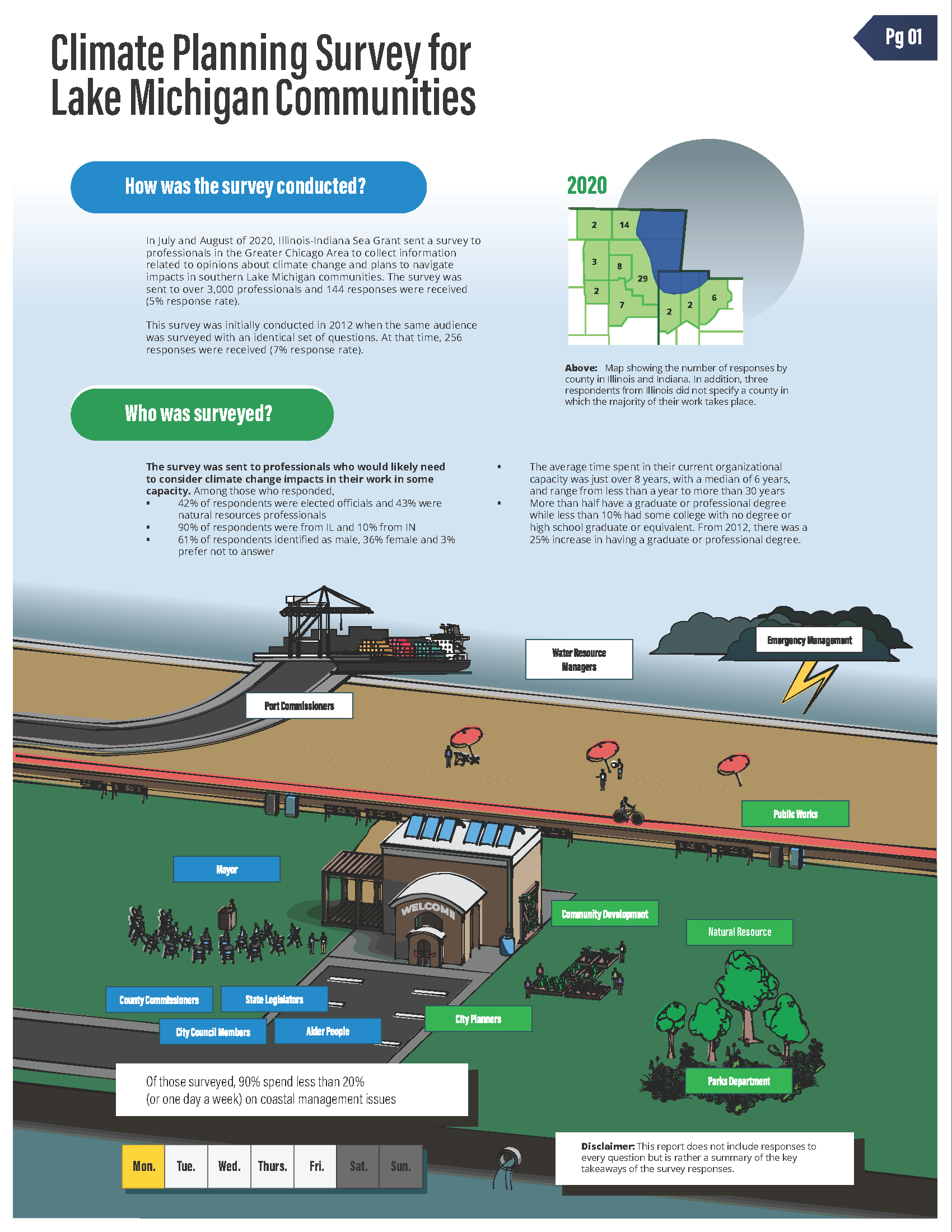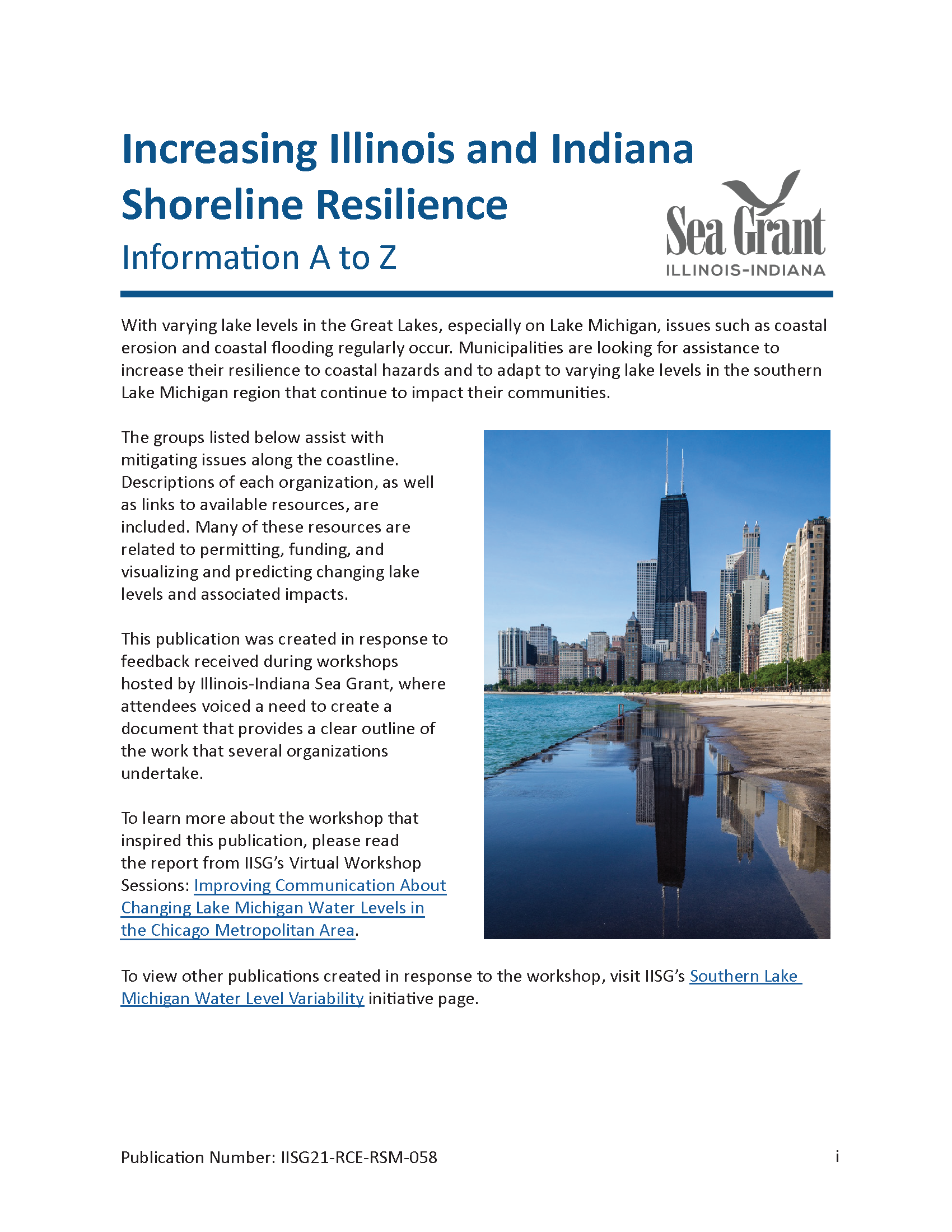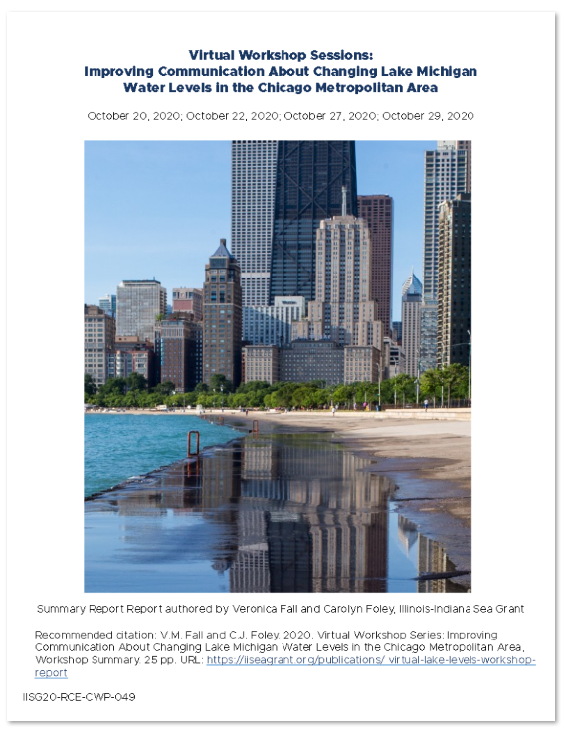
File Size: 17.88 MB
Year: 2022
In July and August of 2020, IISG sent a survey to professionals in the Greater Chicago Area as a follow-up to the same survey conducted in 2012. This five-page fact sheet and infographic showcases the survey results.

In July and August of 2020, IISG sent a survey to professionals in the Greater Chicago Area as a follow-up to the same survey conducted in 2012. This five-page fact sheet and infographic showcases the survey results.

Following IISG’s 2020 workshop focused on lake level variability and communication, one of the key products that participants needed was a list of what types of issues different organizations handle, such as funding, permitting, and other general information needs. This product thoroughly lists the ways in which several federal, Illinois, Indiana and independent organizations can assist coastal communities.

Summary report for IISG’s virtual workshop that was held in October 2020 and focused on improving communication about changing lake levels and water level variability in southwestern Lake Michigan and the impacts to the Chicago metropolitan area.

Summaries of climate events on a quarterly basis throughout the Great Lakes basin as well as an outlook for the next season. The most current report, as well as previous report,s are available on the website for the Midwest Regional Climate Center, located at https://mrcc.illinois.edu/pubs/pubsGreatLakes.jsp.

Meteotsunamis are a tsunami-like wave generated from severe weather impacts on speed and direction of wave movement over a waterbody. These events can result in a localized rise in water levels by as much as 1-2 feet, leading to dangerous rip currents, and lasting minutes to hours. While a true tsunami is much larger, meteotsunamis are more widespread and occur more often. Meteotsunami frequency is realted to both storm frequency and the charactaristics of a waterbody and its coast. In the Great Lakes, they are observed most frequently at sites with the largest harbors posing a sudden threat to beachgoers safety. Many people are unaware of the phenomena and the dangers they produce. While somewhat rare, these events are most common from late spring to early summer and are likely to become more of a concern due to climate change, with increasing frequency and severity of storms in the Great Lakes region.
Note: Some older Illinois-Indiana Sea Grant publications have not yet been restructured into ADA compliant formats. We are actively working on this. If you are having difficulty accessing a particular item in one of our databases, please contact iisg@purdue.edu with the name of the item and its URL for further assistance.